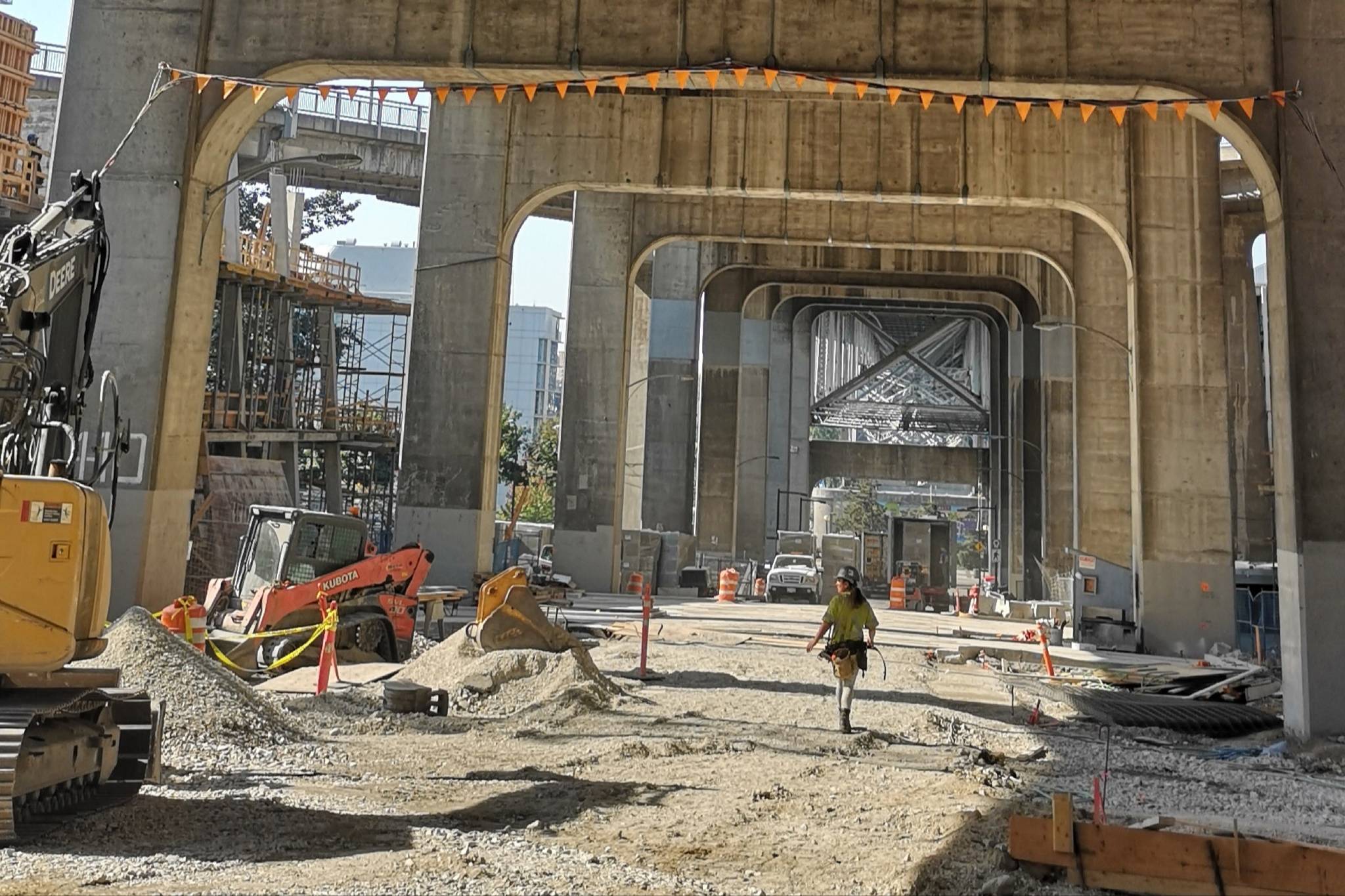By Natalia Buendia Calvillo
Demand for skilled and unskilled labour is so high in B.C., some construction subcontractors are hiring foreign illegal workers to deal with the shortage.
This series examines this province-wide issue and the challenges that undocumented construction workers face.
Construction employed 225,500 people in 2017, according to the BC Construction Association, and the industry accounts for almost nine per cent of the province’s GDP.
The demand for workers is set to increase with upcoming transit projects such as the extension of the SkyTrain in Vancouver and the Surrey light rail project.
In addition, the provincial government has committed to build 114,000 housing units in the next 10 years, as well as multiple new schools.
Those plans represent many years of construction work and thousands of related jobs.
Industry experts anticipate B.C. is facing a massive labour shortage. The BCCA estimates 15,000 construction jobs will go unfilled this year.
A survey by the Independent Contractors and Businesses Association of B.C. suggests while most companies are preparing for growth, 60 per cent of construction companies report a shortage of qualified workers.
The most acute of those can be seen in the drywall, glazier, plumber, roofer and sheet metal work trades. The greatest shortages will occur in the Interior, Northern B.C., Vancouver Island and Metro Vancouver and Whistler regions, according to the ICBA survey.
How much does construction rely on illegal labour?
Tom Sigurdson, executive director of the British Columbia and Yukon Territory Building and Construction Trades Council, said it is hard to know how much the industry is relying on undocumented and illegal labour, but the issue is “very, very significant.”
“Anecdotally, we often say that if authorities were to show up on residential construction sites to check on whether workers were working legally (with proper qualification credentials as well as government issued work permits for ‘visitors’),” Sigurdson said, “at least half the work sites in the Lower Mainland would be shut down the following day due to a lack of workers.”
According to Stats Canada, 28 per cent of the underground economy resides in the construction industry.
“We cannot measure how deep the underground economy is, but we know it is very, very significant,” Sigurdson added.
“Twenty years ago, when the provincial and federal governments had compliance teams checking on underground activity in the construction industry, the teams found in the first (and only) year of operations that over $80 million would be recovered in lost income taxes and unpaid worker compensation premiums.
“Today, that number is significantly larger.”
Undocumented workers coming from Mexico or Latin America
Many young workers from outside the country are bridging the gaps and are willing to adapt to the disadvantageous lifestyle of an undocumented labourer.
Josei is a 22-year-old Mexican finance student from Guadalajara who came to Vancouver for the summer to work in Vancouver. Josei prefers that his real name is not used due to fear of deportation.
He has had many different positions in the industry, such as landscaping, painting, cleaning and other labour positions at construction sites.
“My first boss, he only paid me half of what I worked,” Josei said. “He kept the money and told us that there was an issue and he did not get paid either.”
Josei said employers think undocumented workers can be exploited because they are working without a permit, and there are no consequences if employees aren’t paid or treated properly.
“If they are going to give us half of what they are supposed to pay us, they should at least pay us,” he said.
“My idea is to pay for my tuition and go back there with $1,600 or $2,000 saved. Given the time, I could not have saved this much money in Mexico.”
Josei is on school holidays and will return to Mexico in the fall to continue with his finance degree at a reputable university. Even though he has been working illegally, he entered Canada with a visitor visa and said he will not stay longer than the time allowed.
“It is very important that Canadians and other people understand that immigrants are not here to steal their jobs,” he went on. “I think immigrants just take the jobs that Canadians will not take.”
Illegal workers are willing to live with job and financial uncertainty, low wages, lack of medical care, the risk of not getting paid and in the worst cases, psychological, verbal and physical abuse.
While some situations are more extreme than others, most workers face difficulties when it comes to living a life with a precarious work status. They can potentially present risks to themselves and others if they lack proper training and safety awareness.
Immigration status irrelevant for WorkSafe BC
WorkSafeBC spokesperson Trish Knight Chernecki said the organization does not categorize workers depending on their immigration status.
“Under the Act, all individuals employed at a worksite – including construction – are ‘workers.’ The employer is held responsible for workplace health and safety violations under the Workers Compensation Act and the Occupational Health and Safety Regulation,” Knight Chernecki said.
The penalties for companies that hire illegal workers can go as high as $50,000 in fines and two years in jail.
The Canada Revenue Agency works with immigration authorities to investigate companies and individuals who duck the law.
“In most instances, if one federal agency lays criminal charges against a corporation and its individuals, the CRA would proceed by way of civil assessments to recover any outstanding income tax or GST plus interest and penalties, where applicable,” said a CRA spokesperson.
In the following parts of this series, stories will expand on the living conditions and health care of undocumented workers, as well as the construction underground economy.
Like us on Facebook and follow us on Twitter



